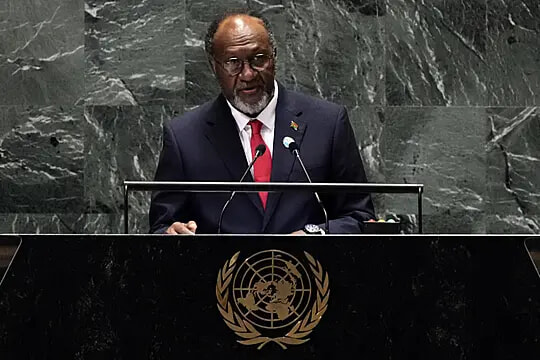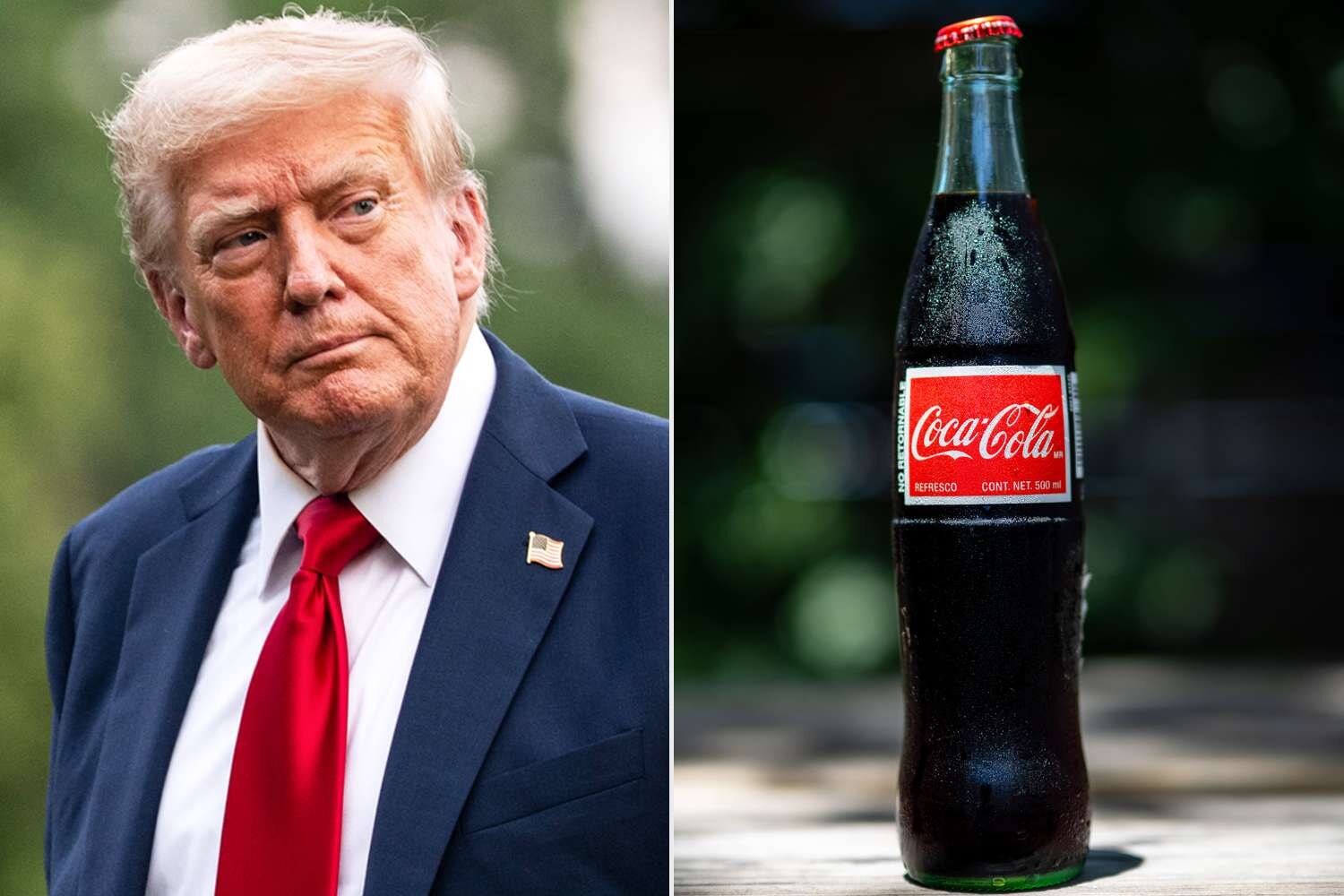
'Dune 3' Gets An Official Title As Filming Starts, And Fans Aren't Pleased
Oh no...
Published July 11, 2025
Advertisement
Advertisement
1. Rumors on Arrakis

The world of cinema and science fiction is once again abuzz, as Denis Villeneuve’s next foray into the Dune universe begins to take shape amid swirling speculation and fervent anticipation. Long before a single camera rolled, rumors had already begun to circulate about what the third film in this ambitious saga would be called and how it might diverge from Frank Herbert’s revered novels. Fans and critics alike wondered whether Villeneuve would follow the path of the first two installments, or break with tradition and name the film after Herbert’s second book, Dune Messiah. The naming of this third chapter was never a minor matter, for the legacy of Dune is both literary and cinematic—a bridge between worlds, genres, and generations. Each whisper, leak, and casting rumor only fueled the mystery, drawing new eyes to the shifting sands of Arrakis and the fate of Paul Atreides. Media outlets from Variety to ScreenCrush tracked every development, chronicling not just studio decisions but the pulse of a passionate fanbase invested in every detail. With previous titles so closely following the narrative structure of Herbert’s original tome, would the franchise now risk alienating devoted readers or confusing casual viewers? Industry insiders hinted at subtle shifts, speculating that the adaptation might blend storylines from both Messiah and Children of Dune, yet definitive answers were elusive. At the same time, casting choices—such as the confirmed return of Timothée Chalamet, Zendaya, and Jason Momoa, and the debut of Nakoa-Wolf Momoa and Ida Brooke as Paul and Chani’s children—raised further questions about the film’s temporal setting. As the conversation reached a fever pitch, some observers argued that the fate of the Dune franchise itself might hinge on how this crucial installment was framed and marketed. In the background, Villeneuve’s creative vision and the weight of audience expectations set the stage for a reveal that would both surprise and challenge its most ardent followers.
Advertisement
2. A Tradition of Titles

The legacy of Dune on the silver screen is nothing short of storied, marked by triumphs, controversies, and a determination to do justice to Herbert’s sprawling universe. Villeneuve’s first two entries, Dune (2021) and Dune: Part Two (2024), were lauded for their fidelity to the source material and for transforming Herbert’s labyrinthine world into cinematic spectacle. Each film meticulously adapted half of the original 1965 novel, earning critical and commercial acclaim while raising the bar for science fiction epics in the modern era. Their titles, unambiguously labeled as “Part One” and “Part Two,” set a clear narrative path, establishing a naming convention rooted in structural continuity rather than direct literary reference. This approach offered clarity to audiences, ensuring that even newcomers to the saga could follow Paul Atreides’ journey through the deserts of Arrakis without confusion. Yet, with the conclusion of the first book’s story, a question loomed over the next phase: would Villeneuve stay true to Herbert’s sequel, or would the franchise take a new direction? As media speculation swelled, early reports suggested the third film would be called Dune Messiah, mirroring Herbert’s own transition between novels. Industry watchers debated the merits of adhering to such tradition, noting that a sharp break in naming could signal a thematic or narrative departure. Online forums and fan communities dissected every detail, even as studio silence fueled uncertainty and heightened anticipation. For many, the title was more than a label—it was a promise of what kind of story would be told and how closely it would honor the canon that has captivated readers for decades. In the absence of confirmation, both excitement and anxiety permeated discussions, as the fate of Dune’s next act hung in the balance.
Advertisement
3. Casting, Continuity, and Change

As the creative team assembled for Dune: Part Three, the cast’s makeup began to offer clues about the film’s intended scope and ambitions. Timothée Chalamet’s return as Paul Atreides and Zendaya’s as Chani ensured continuity at the saga’s emotional core, while Jason Momoa’s revival of Duncan Idaho promised fresh energy and nostalgia alike. Significantly, the addition of Nakoa-Wolf Momoa and Ida Brooke as Leto II and Ghanima suggested a narrative leap beyond Dune Messiah and into Children of Dune territory, raising expectations for a broader adaptation. Fans scoured social media for updates, noting Chalamet’s shaved head and Zendaya’s arrival in Budapest as filming commenced for an “extensive, multi-location, multi-month shoot.” Newcomers to the cast, coupled with returning stars Florence Pugh and rumored appearances by Robert Pattinson, hinted at bold reinterpretations of familiar characters. This evolving ensemble signaled a willingness to blend timelines and story arcs, departing from strict adherence to the original novels. Insiders pointed out that casting older actors for the roles of Leto II and Ghanima suggested their characters would be aged up, aligning the narrative more with Children of Dune than Messiah. Such choices reinforced the perception that Villeneuve was crafting a hybrid tale—one that draws from several sources to create something singularly cinematic. Studio executives and producers remained tight-lipped about exact plot details, but their decisions reflected both respect for legacy and a drive for innovation. Amid all these changes, the return of familiar faces served to reassure fans that, however the story evolved, its heart would remain intact. Each casting announcement was thus met with equal parts curiosity and optimism, as audiences braced for a Dune saga that might defy easy expectations.
Advertisement
4. Cinematic Universe in Flux

Behind the scenes, the production of Dune: Part Three unfolded against the backdrop of a rapidly changing cinematic landscape, where technical innovation and audience engagement are more crucial than ever. Reports confirmed that select sequences would be shot with IMAX cameras, building on the breathtaking visuals that have become Villeneuve’s hallmark. While rumors initially suggested the entire film might be shot in IMAX, clarifications from industry executives revealed that, like its predecessors, only certain scenes would utilize the format’s unparalleled clarity. This choice underscored the film’s commitment to visual spectacle while tempering expectations about technological leaps. Meanwhile, conversations about IMAX were accompanied by broader reflections on the power of theatrical experience and the enduring draw of epic storytelling in an age of streaming dominance. Box office statistics from previous Dune films revealed a deep audience appetite for immersive sci-fi, with Part Two earning over $700 million worldwide and garnering five Oscar nominations. As Villeneuve himself noted in interviews, his vision for the franchise was always more than a mere trilogy; the first two films, in his words, formed “one entity,” a completed diptych. Yet the possibility of continued expansion—whether into Messiah, Children of Dune, or even original narrative territory—suggested that Arrakis’ story was far from finished. Fan speculation swirled around the potential for new spin-offs and series, especially after the prequel Dune: Prophecy was renewed for a second season on HBO. Villeneuve’s approach, blending fidelity and innovation, seemed designed to keep the Dune universe flexible, evolving in response to both audience demand and creative inspiration. As a result, every technical decision and narrative hint became part of a larger conversation about the future of cinematic world-building itself.
Advertisement
5. Dune: Part Three

The mystery surrounding the next installment’s title was finally put to rest with an official announcement: the film would be called Dune: Part Three, maintaining the numerical progression of its predecessors. This choice came as a surprise to many, especially those expecting a direct nod to Herbert’s Dune Messiah, but it reflected a strategic effort to preserve brand clarity and continuity. Industry analysts explained that retaining a simple, numbered structure made the franchise more accessible to mainstream audiences who might not be familiar with the books. From a marketing standpoint, the move was also practical—ensuring the new film would be seen as a direct continuation of a beloved saga, rather than a sudden shift into new narrative territory. Studio insiders acknowledged that the decision was not without controversy, sparking debate among purists who preferred literary fidelity over commercial strategy. Social media reactions were swift and divided, with some fans lamenting the missed opportunity to use the evocative “Messiah” subtitle, while others accepted the logic of the approach. Meanwhile, a subset of observers noted that the title might signal more than just a change in naming convention—it could reflect a blending of storylines and a willingness to depart from a strict, book-by-book adaptation. Casting choices, particularly the inclusion of aged-up versions of Leto II and Ghanima, only fueled these suspicions. Villeneuve, for his part, emphasized that his goal was to create “something that feels different and has its own identity,” suggesting a creative boldness at the heart of the project. The title’s announcement thus became a focal point for larger conversations about adaptation, authenticity, and the evolving relationship between literature and cinema. With the question of the title settled, attention now turned to the deeper mysteries of plot, character, and vision that awaited in the desert sands.
Advertisement
6. Fan Reactions

No sooner had the official title dropped than the internet erupted with opinions, analysis, and a torrent of speculation about what Dune: Part Three might mean for the story’s future. Some longtime fans took to social media to voice their disappointment, arguing that the decision to avoid the “Messiah” subtitle diluted the film’s connection to its literary roots. Comments ranged from “that is a terrible title” to “Messiah is about to be the hardest subtitle ever for a film,” reflecting a desire for greater ambition in how the franchise branded itself. Others speculated that the change signaled a more substantial shift—one that could see the adaptation moving beyond Messiah to include substantial elements from Children of Dune. The confirmed casting of teenage actors as Leto II and Ghanima lent credence to these theories, raising questions about how faithfully Villeneuve would follow the chronology and structure of Herbert’s novels. Discussions proliferated on forums and entertainment sites, where users dissected every casting rumor, production update, and directorial comment for hidden meaning. In this environment, even small details—like Timothée Chalamet’s new hairstyle or Zendaya’s filming schedule—became sources of heated debate. A segment of the fanbase, however, welcomed the decision, seeing it as an opportunity for Villeneuve to forge his own creative path and bring new perspectives to the Dune universe. Others pointed out that maintaining numerical titles would avoid confusing viewers who were not steeped in Dune lore, ensuring the saga’s accessibility to the broadest possible audience. With production underway and new plot details emerging slowly, the speculation showed no signs of slowing, becoming an integral part of the movie’s pre-release narrative. Ultimately, the diversity of reactions underscored the enduring passion and complexity of the Dune fandom—a community that, like Arrakis itself, thrives on change and the unexpected.
Advertisement
7. Adapting Messiah

Beneath the controversy over naming lay a deeper question: how would Villeneuve adapt the storylines of Dune Messiah and Children of Dune for the screen, and what creative liberties might he take? Industry reports and casting announcements pointed to a synthesis of material from both books, with a time jump propelling the narrative years beyond the end of Part Two. Early set leaks suggested that the characters of Leto II and Ghanima would be portrayed as older than their literary counterparts, hinting at a more expansive and ambitious adaptation. Observers noted that the inclusion of new and returning cast members could signal the blending of several plot threads into a single, cohesive arc. This approach mirrored trends in modern franchise storytelling, where strict adherence to source material often gives way to reinterpretation and innovation. Villeneuve himself expressed a desire to create “a new film with new circumstances,” signaling an intent to move beyond simple translation and into the realm of reinvention. Such a move carried risks—devoted readers might object to major deviations, while new viewers might struggle to keep pace with the evolving narrative. However, the creative freedom afforded by this strategy also promised fresh dramatic opportunities, allowing the story to evolve organically in response to its cinematic context. By refusing to be bound by the strictures of the books, Villeneuve positioned himself to deliver both surprises and new depths to the mythos of Dune. As the production continued, audiences were left to wonder just how far the film would depart from Herbert’s text—and how much it might ultimately redefine the boundaries of adaptation itself. This tension, between expectation and invention, became a defining feature of the build-up to Dune: Part Three.
Advertisement
8. Technical Mastery

One of the defining hallmarks of the Dune franchise under Villeneuve has been its commitment to technical excellence and visual innovation, setting a new standard for sci-fi filmmaking. The announcement that Dune: Part Three would feature scenes shot with IMAX cameras underscored the director’s ongoing pursuit of immersive, grand-scale spectacle. While not the first film to utilize IMAX technology, the selective approach mirrored previous Dune installments, leveraging the format for maximum impact during key sequences. Industry insiders clarified that, unlike Christopher Nolan’s The Odyssey—which was filmed entirely in IMAX—Dune: Part Three would employ a hybrid method, balancing scope and practicality. For audiences, this promised another round of breathtaking vistas and meticulously crafted battle scenes, reinforcing Arrakis as a world both harsh and hypnotic. The commitment to practical effects, on-location shoots, and innovative sound design continued to distinguish Villeneuve’s approach from more conventional blockbusters. Meanwhile, the success of Dune: Part Two at the box office, and its recognition during awards season, established high expectations for the technical prowess of its successor. Studio executives, cognizant of shifting audience habits and the rise of home streaming, doubled down on theatrical experience as an essential part of the Dune mystique. Marketing campaigns emphasized the film’s scale and sensory immersion, inviting viewers back to theaters for a uniquely transportive experience. For Villeneuve and his team, each technical decision was inseparable from the larger goal of honoring Herbert’s vision while pushing the limits of what modern cinema could achieve. As a result, Dune: Part Three stood poised to redefine audience expectations for what a science fiction epic could deliver in both form and feeling.
Advertisement
9. The Industry and the Future

With Dune: Part Three officially in production, industry analysts turned their attention to the broader implications for the franchise and for blockbuster filmmaking as a whole. The straightforward numerical titling was seen as a signal of Warner Bros.’ intent to establish Dune as a multi-part epic with enduring, global appeal. Franchise expansion seemed likely, with discussions of future sequels, spin-offs, and series gaining momentum alongside the continued success of Dune: Prophecy on streaming platforms. The blending of storylines from Messiah and Children of Dune hinted at a possible narrative roadmap extending well beyond the current trilogy. Casting decisions, international filming locations, and the leveraging of IMAX technology reflected a commitment to building Dune into a perennial cinematic event. Villeneuve’s dual focus on fidelity and innovation positioned him as a director unafraid to balance audience expectation with creative autonomy. Industry observers speculated that the success of Dune: Part Three could shape studio strategies for adapting other complex literary franchises, especially in an era of heightened competition for audience attention. The embrace of epic storytelling, technological prowess, and rich, character-driven drama offered a blueprint for reinvigorating the big-screen experience. Yet, the film’s development also underscored the perennial challenges of adaptation, reminding audiences that every creative choice carries both risk and reward. For Warner Bros., Legendary, and the Dune team, the journey to Part Three represented not just the continuation of a beloved story, but the ongoing evolution of cinematic storytelling itself. In this way, the franchise’s future became as much a story about the industry as about Arrakis, Paul Atreides, or the Fremen’s destiny.
Advertisement
10. Anticipation and Arrival

As December 2026 approaches, anticipation for Dune: Part Three continues to mount, fueled by a potent mix of curiosity, nostalgia, and critical scrutiny. Filming in Budapest and other locations, the production is shrouded in secrecy, with only the occasional set photo or casting tidbit reaching the eager public. Every new piece of information—whether a directorial comment, a costume reveal, or a trailer teaser—becomes an event in itself, dissected and discussed across forums and media platforms. The return of beloved characters and the promise of narrative innovation have combined to heighten expectations for both returning fans and newcomers alike. Villeneuve’s insistence that this new film will not complete a trilogy but instead mark a new beginning sets the stage for surprises and reinvention. Studio marketing campaigns, fan theories, and critical previews all contribute to a sense of mounting excitement that recalls the golden era of cinematic event releases. The unresolved questions—about the balance of adaptation, the fate of key characters, and the ultimate meaning of the story—only deepen the sense of investment among audiences. For those who have followed Dune’s journey from page to screen, from Part One to Part Three, the forthcoming film represents both an ending and a new frontier. The challenges of adaptation, the rewards of innovation, and the enduring power of epic storytelling converge in this moment, as the sands of Arrakis once again shift beneath our feet. As the premiere draws near, all eyes turn to the desert, ready to witness a new chapter in the saga of Paul Atreides and the world he has changed forever. In the end, Dune: Part Three stands not just as the continuation of a story, but as a testament to the imagination, ambition, and risk that define the greatest works of modern cinema.
Advertisement
Advertisement
You May Also Like






